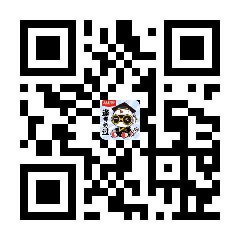2017年上半年中小学教师资格考试英语学科知识与教学能力试题(高级中学)(精选)
一、单项选择题(本大题共30小题,每小题2分,共60分)
1. Which of the following is the feature shared by the English phonemes/m/and/p/?
A. Voiced.
B. Voiceless.
C. Bilabial.
D. Dental.
2. Which of the following is true of English sound system?
A. Aspiration is a distinctive feature.
B. Voicing is a distinctive phonetic feature.
C. Nasalization of vowels gives rise to another vowel.
D. Length of vowels differentiates one vowel from the other.
[响音]特征用来区分所谓阻塞音(塞音、擦音及塞擦音)和响音(其他辅音和元音),即阻塞音是[-响音],响音是[+响音]。[鼻音]和[带声]自然就是用来分别区分鼻音(包括鼻化音)和带声音的特征。这些特征都是二分特征,可以区分出两种情况:有该特征的和没有该特征的。元音的长短只能区分单元音,并不能区分双元音,D项说法不正确。故选B。
3. Though the government encourages foreign investment,__________ investors are reluctant to commit fimds in the current climate situation in the country.
A. potential
B. affluent
C. optimistic
D. solid
4. The man __________ the dark glasses fled away from the spot very rapidly.
A. in
B. at
C. of
D. by
5. The morpheme "-ceive" in the word "conceive" is a__________.
A. stem
B. root
C. allomorph
D. suffix
6. There is no need__________ to teach children how to behave.
A. however
B. whatsoever
C. forever
D. whenever
7. __________advance seems to be following advance on almost a monthly basis.
A. So rapid is the rate of progress that
B. Rapid as the rate of progress is that
C. So rapid is the rate of progress as
D. Rapid as the rate of progress as
8. Tom, see that your sister gets safely back, __________?
A. can you
B. won't we
C. won' t you
D. should we
9. What rhetoric device is used in the sentence "This is a successful failure"?
A. Simile
B. Metonymy
C. Metaphor
D. Oxymoron
10. The expression"As far as I know ..." suggests that people usually observe the Maxim of __________ in their daily conversations.
A. Quantity
B. Quality
C. Relevance
D. Manner
(1)量的准则(Maxim of Quantity):尽量提供对方所需信息,不提供冗余信息。
a.所需的话应包含交谈目的所需信息量:
b.所说的话不应超出交际所需的信息量。
(2)质的准则(Maxim of Quality):只讲真实的话。
a.不要说自知是虚假的话:
b.不要说缺乏足够证据的话.
(3)关系准则(Maxim of Relevance):所讲的话要有联系。
(4)方式准则(Maxim of Manner):讲话要简练,清楚,有条理。
a.避免晦涩:
b.避免歧义:
C.简练(避免哕嗦):
d.井井有条二
通过分析,正确答案为B项
11. When the teacher attempts to elicit more information from the students by saying "And...?","Good. Anything else?", etc, he/she is playing the role of a __________.
A. prompter
B. participant
C. manager
D. consultant
12. For more advanced learners, group work may be more appropriate than pair work for tasks that are__________.
A. linguistically simple
B. structurally controlled
C. cognitively challenging
D. thematically non-demanding
13. When you focus on "utterance function" and "expected response" by using examples like"Here you are", "Thanks", you are probably teaching language at the __________.
A. lexical level
B. sentence level
C. grammatical level
D. discourse level
14. Which of the following tasks fails to encourage active language use?
A. Reciting a text.
B. Bargaining in a shop.
C. Writing an application letter.
D. Reading to get a message.
15. A teacher may encourage students to__________ when they come across new words in fast reading.
A. take notes
B. ask for help
C. guess meaning from context
D. look up the words in a dictionary
16. Which of the following statements about task design is incorrect?
A. Activities must have clear and attainable objectives.
B. Activities should be confined to the classroom context.
C. Activities must be relevant to students' life experiences.
D. Activities should help develop students' language ability.
17. If someone says "I know the word", he should not only understand its meaning but also be able to pronounce, spell, and __________ it.
A. explain
B. recognize
C. memorize
D. use
18. Teachers could encourage students to use__________ to gather and organize their ideas for writing.
A. eliciting
B. mind mapping
C. explaining
D. brainstorming
19. When students are asked to go to the local museum, libraries, etc. to find out information about endangered animals and work out a plan for an exhibition, they are doing a(n) __________.
A. survey
B. experiment
C. project
D. presentation
20. Which of the following tasks fails to develop students' skill of recognizing discourse patterns?
A. Analyzing the structure of difficult sentences.
B. Checking the logic of the author's arguments.
C. Getting the scrambled sentences into a paragraph.
D. Marking out common openers to stories and jokes.
请阅读Passage l,完成21-25小题。
Passage 1
In the field of psychology, there has long been a certain haziness surrounding the definition of creativity, an I-know-it-when-I-see-it attitude that has eluded a precise formulation. During our conversation, Mark Beeman, a cognitive neuroscientist at Northwestern University, told me that he used to be reluctant to tell people what his area of study was, for fear of being dismissed or misunderstood. What, for instance, crosses your mind when you think of creativity? Well, we know that someone is creative if he produces new things or has new ideas. And yet, as John Kounios, a psychologist at Drexel University who collaborates frequently with Beeman, points out, that view is wrong, or at least not entirely right. "Creativity is the process, not the product," he says.
To illustrate, Beeman offers an example. Imagine someone who has never used or seen a paperclip and is struggling to keep a bunch of papers together. Then the person comes up with a new way of bending a stiff wire to hold the papers in place."That was very creative," Beeman says. On the flip side, if someone works in a new field--Beeman gives the example of nanotechnology--anything that he produces may be considered inherently "creative." But was the act of producing it actually creative? As Beeman put it,"Not all artists are creative. And some accountants are very creative."
Insight, however, has proved less difficult to define and to study. Because it arrives at a specific moment in time, you can isolate it, examine it, and analyze its characteristics."Insight is only one part of creativity," Beeman says."But we can measure it. We have a temporal marker that something just happened in the brain. I'd never say that's all of creativity, but it's a central,identifiable component." When scientists examine insight in the lab, they are looking at what types of attention and thought processes lead to that moment of synthesis: If you are trying to facilitate a breakthrough, are there methods you can use that help? If you feel stuck on a problem, are there tricks to get you through?
In a recent study, Beeman and Kounios followed people's gazes as they attempted to solve what's called the remote-associates test, in which the subject is given a series of words, like "pine,""crab," and "sauce," and has to think of a single word that can logically be paired with all of them.
They wanted to see if the direction of a person' s eyes and her rate of blinking could shed light on her approach and on her likelihood of success. It turned out that if the subject looked directly at a word and focused on it--that is, blinked less frequently, signaling a higher degree of close attention--she was more likely to be thinking in an analytical, convergent fashion, going through possibilities that made sense and systematically discarding those that didn' t. If she looked at "pine,"say, she might be thinking of words like "tree," "cone," and "needle," then testing each option to see if it fit with the other words. When the subject stopped looking at any specific word, either by moving her eyes or by blinking, she was more likely to think of broader, more abstract associations.
That is a more insight-oriented approach."You need to learn not just to stare but to look outside your focus," Beeman says. (The solution to this remote-associates test: "apple. ")
As it turns out, by simple following someone's eyes and measuring her blinks and fixation times, Beeman's group can predict how someone will likely solve a problem and when she is nearing that solution. That's an important consideration for would-be creative minds: it helps us understand how distinct patterns of attention may contribute to certain kinds of insights.
21. Which of the following is closest in meaning to the underlined word"haziness" in PARAGRAPH ONE?
A. Arbitrariness.
B. Vagueness.
C. Misunderstanding.
D. Controversy.
22. According to John Kounios, what does the underlined word "that" in PARAGRAPH two refer to?
A. Bending the stiffwire.
B. Holding papers in place.
C. The idea of making a paperclip.
D. The process of making a paperclip.
23. In PARAGRAPH FOUR, which of the following shows the purpose of describing the experiment?
A. To discern the link between analytical thinking and insights.
B. To discern connection between close attention and insights.
C. To discern connection between close attention and imagination.
D. To test people' s capacity for close attention and abstract association.
24. Based on the experiment, which of the following may signal that the subject is nearing the solution?
A. The subject is begging to work.
B. The subject looks away at something else.
C. The subject is distracted from the given words.
D. The subject concentrates on the given words all the time.
25. What is the best title for this passage?
A. Creativity. and Insights
B. Insights and Problem Solving
C. Where Do Insight Moments Come?
D. Where Do Creativity Moments Come?
请阅读Passage 2,完成26~30小题。
Passage 2
Taylor Swift, the seven-time Grammy winner, is known for her articulate lyrics, so there was nothing surprising about her writing a long column for The Wall Street Journal about the future of the music industry. Yet there' s reason to doubt the optimism of what she had to say "This moment in music is so exciting because the creative avenues an artist can explore are limitless," Swift wrote."In this moment in music, stepping out of your comfort zone is rewarded,and sonic evolution is not only accepted ... it is celebrated. The only real risk is being too afraid to take a risk at all."
That's hard to reconcile with Nielsen's mid-year U.S. music report, which showed a 15 percent year-on-year drop in album sales and a 13 percent decline in digital track sales. This could be the 2013 story all over again, in which streaming services cannibalize their growth from digital downloads, whose numbers dropped for the first time ever last year, except that even including streams, album sales are down 3.3 percent so far in 2014. Streaming has grown even more than it did last year,42 percent compared to 32 percent, but has failed to make up for a general loss of interest in music.
Consider this: in 2014 to date, Americans purchased 593.6 million digital tracks and heard 70.3 million video and audio streams for a sum total of 663.9 million. In the comparable period of 2013,the total came to 731.7 million.
Swift, one of the few artists able to pull off stadium tours, believes it's all about quality.
"People are still buying albums, but now they' re buying just a few of them," she wrote. "They are buying only the ones that hit them like an arrow through the heart."
In 2000, album sales peaked at 785 million. Last year, they were down to 415.3 million. Swift is right, but for many of the artists whose albums pierce hearts like arrows, it's too late. Sales of vinyl albums have increased 40.4 percent so far this year, according to Nielsen, and the top-selling one was guitar hero Jack White' s Lazaretto. The top 10 also includes records by the aging or dead,such as the Beatles and Bob Marley & the Wailers. More modern entries are not exactly teen sensations, either: the Black Keys, Beck and the Arctic Monkeys. None of these artists is present on the digital sales charts, including or excluding streams. The top-selling album so far this year, by a huge margin, is the saccharine soundtrack to the Disney animated hit, "Frozen".
When, like me, you're over 40 and you believe the music industry has been in decline since in 1993 (the year Nirvana released in Utero), it' s easy to criticize the music taste of "the kids these days," a term even the 23-year old Swift uses. My fellow dinosaurs will understand if they compare 1993's top albums to Nielsen's 2014 list. But these kids don't just like to listen to different music than we do, they no longer find much worth hearing.
The way the music industry works now may have something to do with that. In the old days, musicians showed their work to industry executives, the way most book authors still do to publishers (although that tradition, too, is eroding). The executives made mistakes and were credited with brilliant finds. Sometimes they followed the public taste, and sometimes they strove to shape it, taking big financial and career risks in the process. These days, according to Swift, it's all about the social networks. "A friend of mine, who is an actress, told me that when the casting for her recent movie came down to two actresses, the casting director chose the actress with more Twitter followers," Swift wrote.
"In the future, artists will get record deals because they have fans--not the other way around."
The social networks are fickle and self-consciously sarcastic(see the recent potato salad phenomenon). They are not about arrow-through-the-heart sincerity. That' s why YouTube made Psy a star, but it couldn't have been the medium for Beatle mania. Justin Timberlake has 32.9 million Twitter followers, but he' s no Jack White.
In the music industry' s heyday, it produced a lot of schlock. But it got great music out to the masses, too. These days, it expects artists to do their own promotion and for those who less good at that than at making music, it may mean not getting heard. For fans it means less good music to stream and download. Well, there's always the warm and fuzzy world of vinyl nostalgia, I guess.
26. How does the writer perceive Swift's attitude towards the future of the music industry?
A. She is no doubt over-optimistic about it.
B. She is too young to make a reliable judgment.
C. She is professional enough to predicate it wisely.
D. She doesn' t follow what others have said about it.
27. Why is music industry declining in the writer' s view?
A. The music world is increasingly dominated by self-centered people.
B. The music industry favors musicians who have more social networks.
C. Modem musicians are no longer taking risks when composing music.
D. Many musicians are not willing to promote their music on the Interact.
28. What does the underlined word "that" in PARAGRAPH EIGHT refer to?
A. Kid' s music taste.
B.1993' s top album.
C. Nielsen' s 2014 list.
D. The music industry.
29. Which of the following is closest in meaning to the underlined word"heyday" in the Last PARAGRAPH?
A. Bad moment.
B. Golden time.
C. Rush hour.
D. Lucky day.
30. Why does the writer fell nostalgic about vinyl albums?
A. They mainly cater for young people.
B. They promote music for people over 40.
C. They rely on social networks in their distribution.
D. They contain music that could touch people' s hearts.




